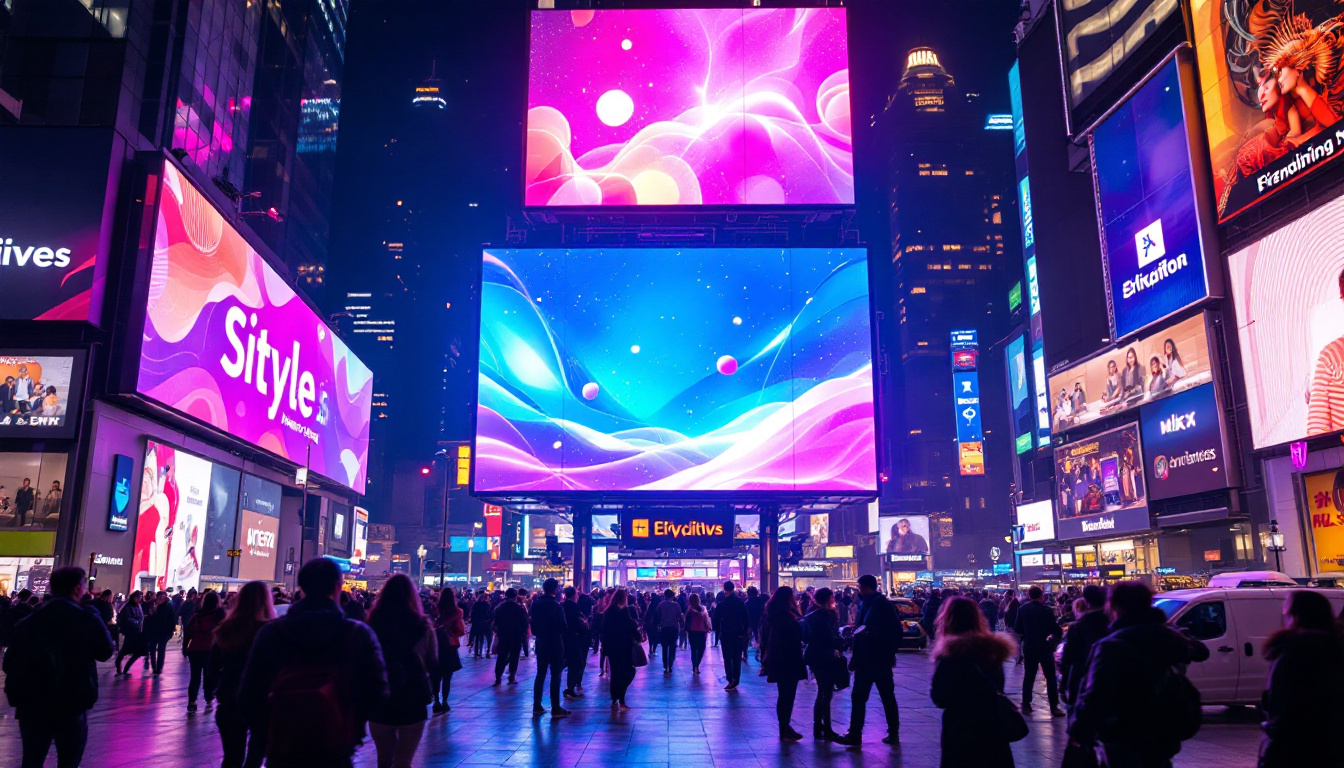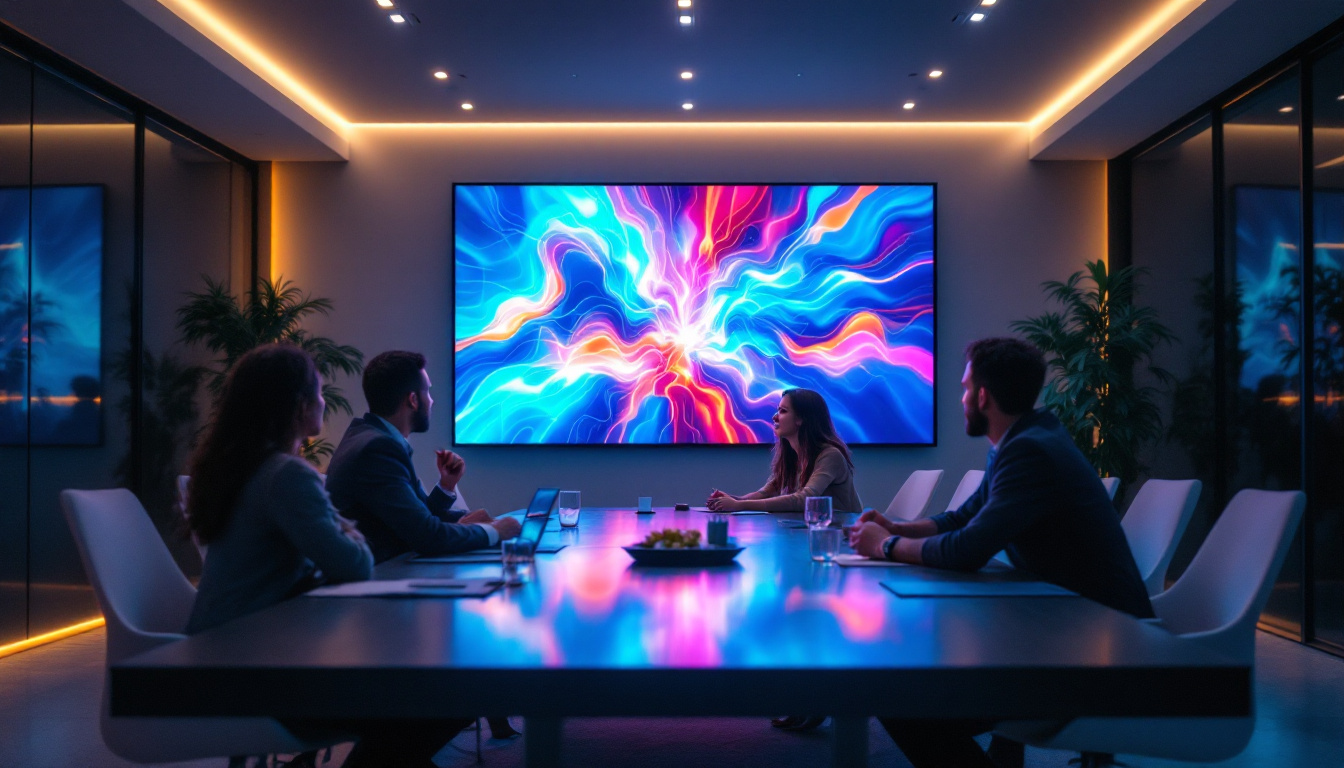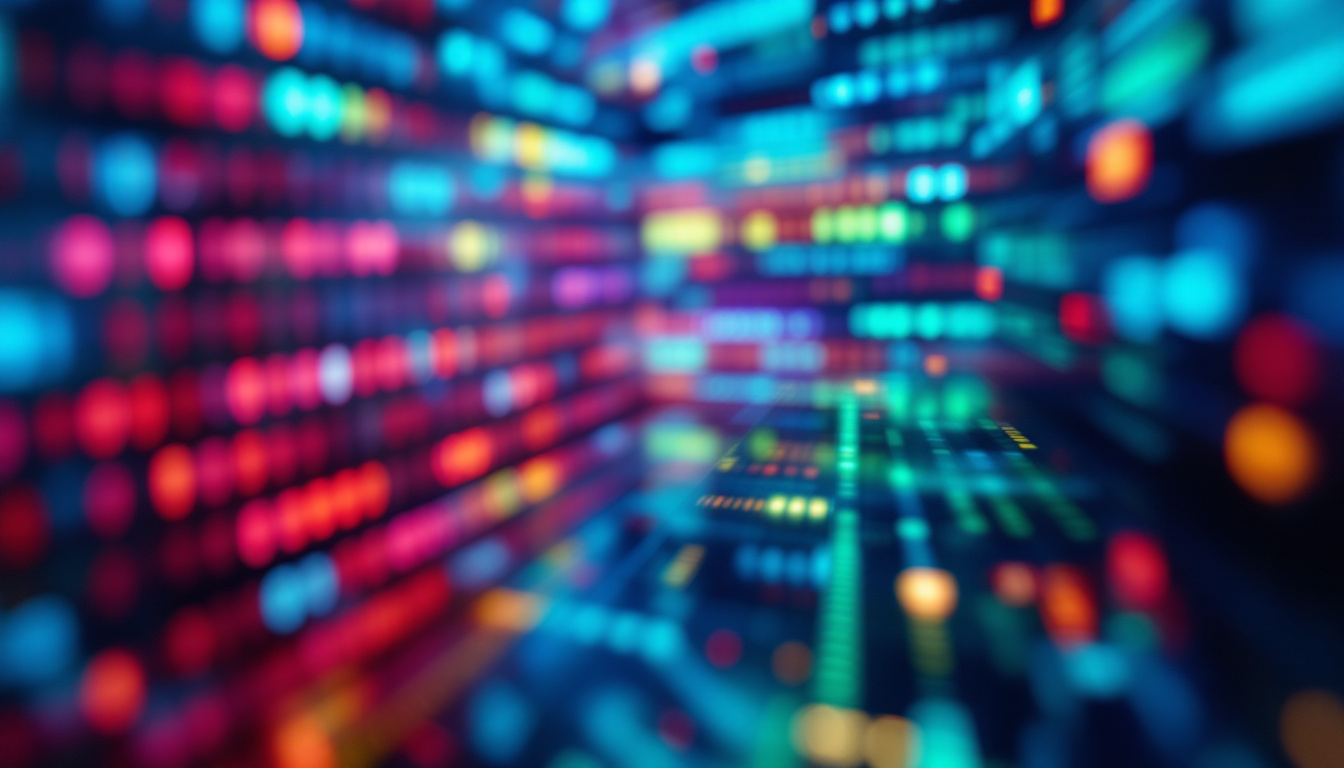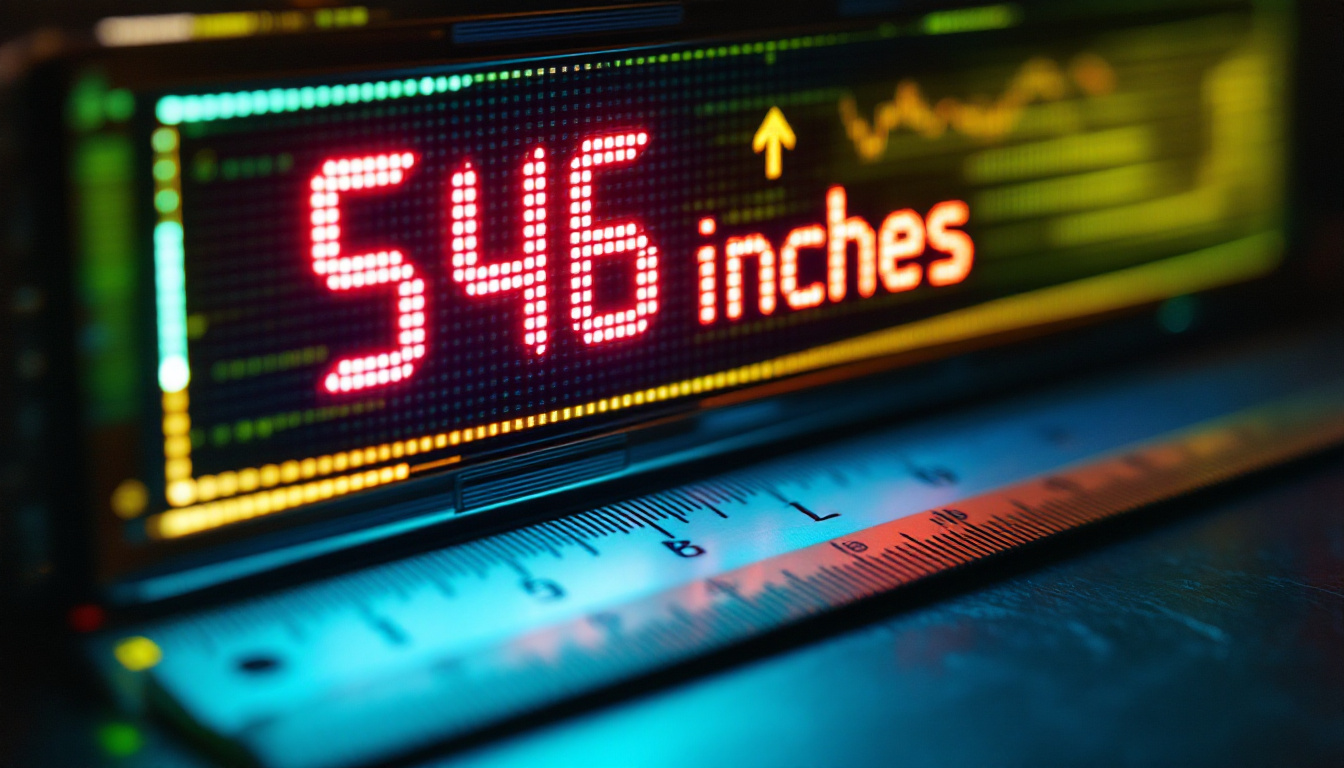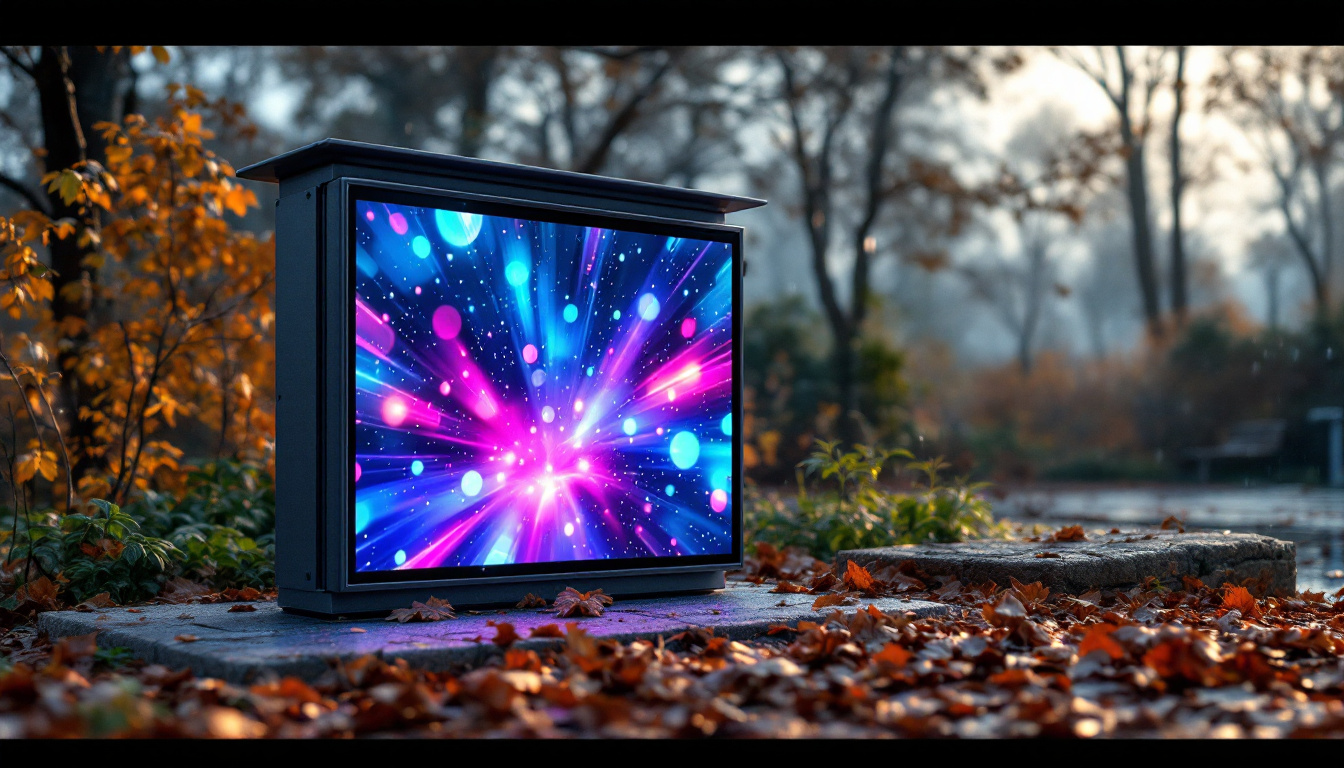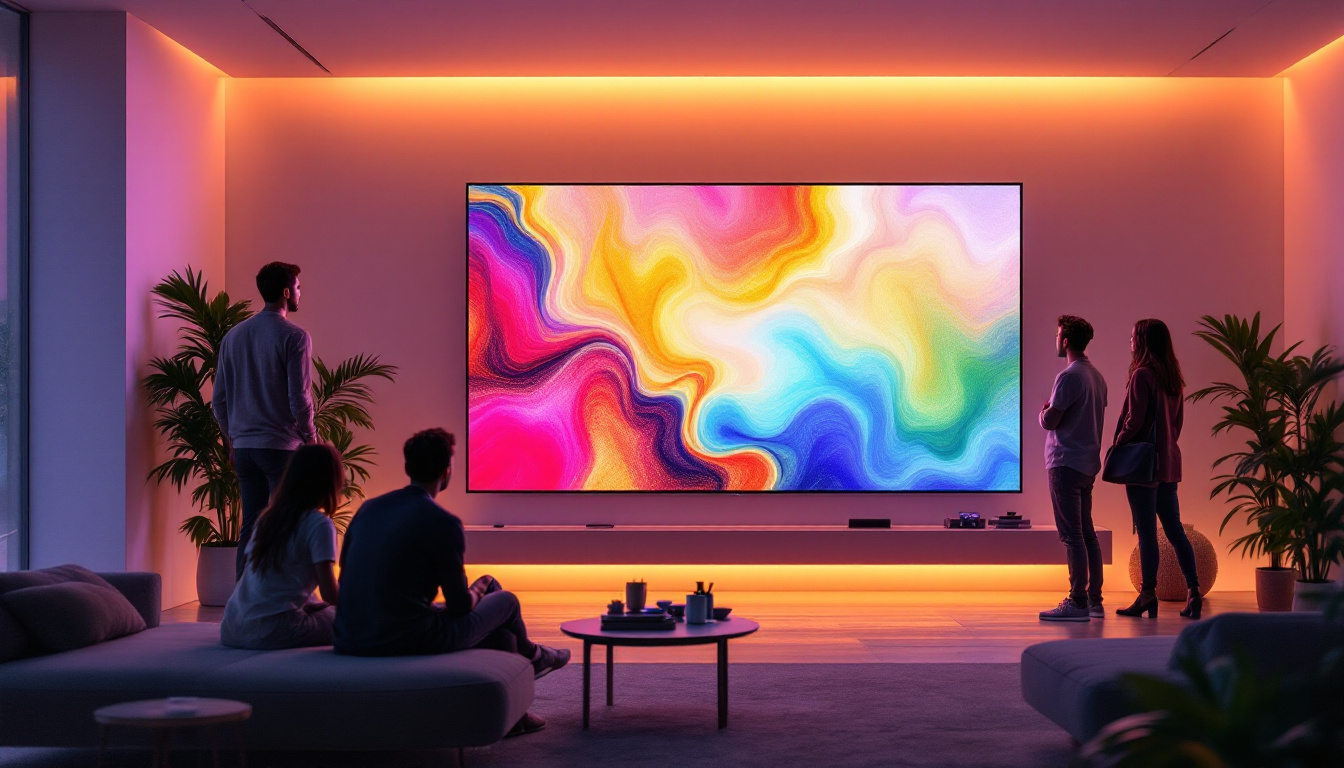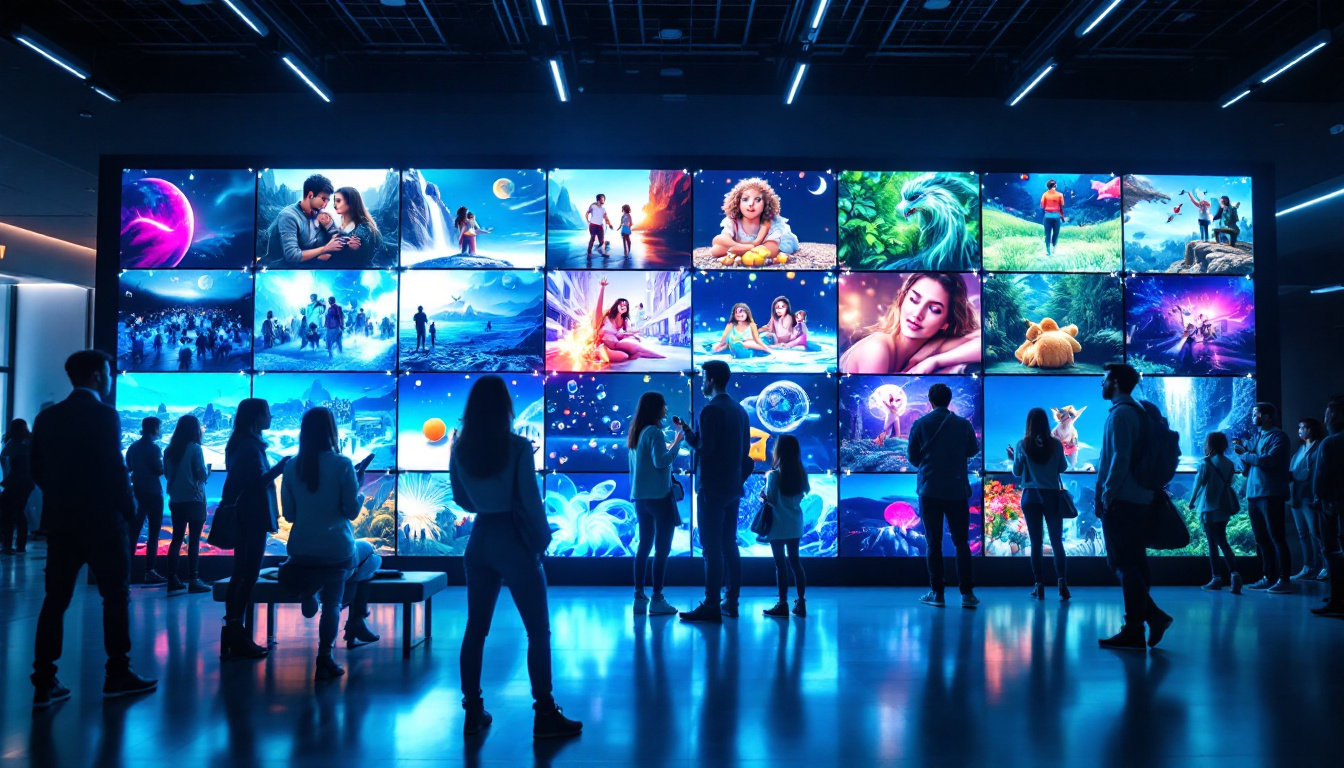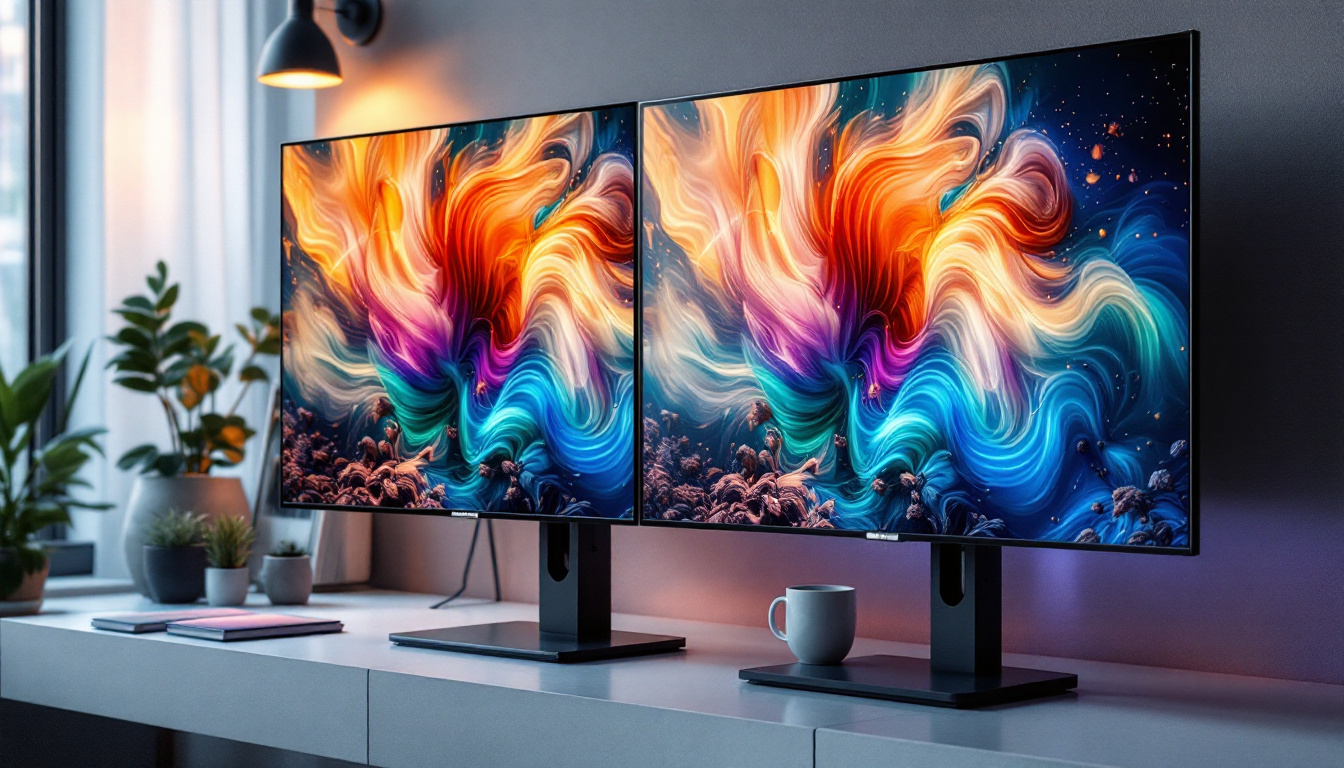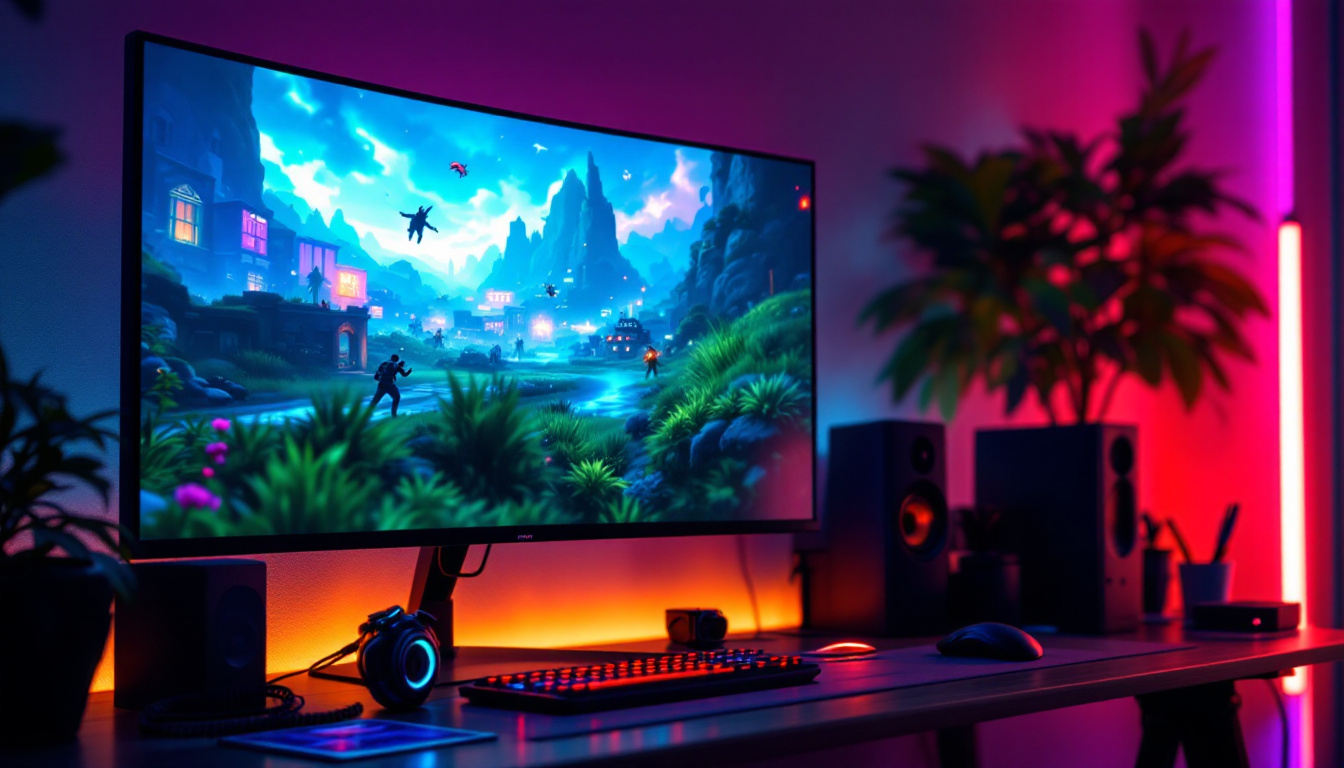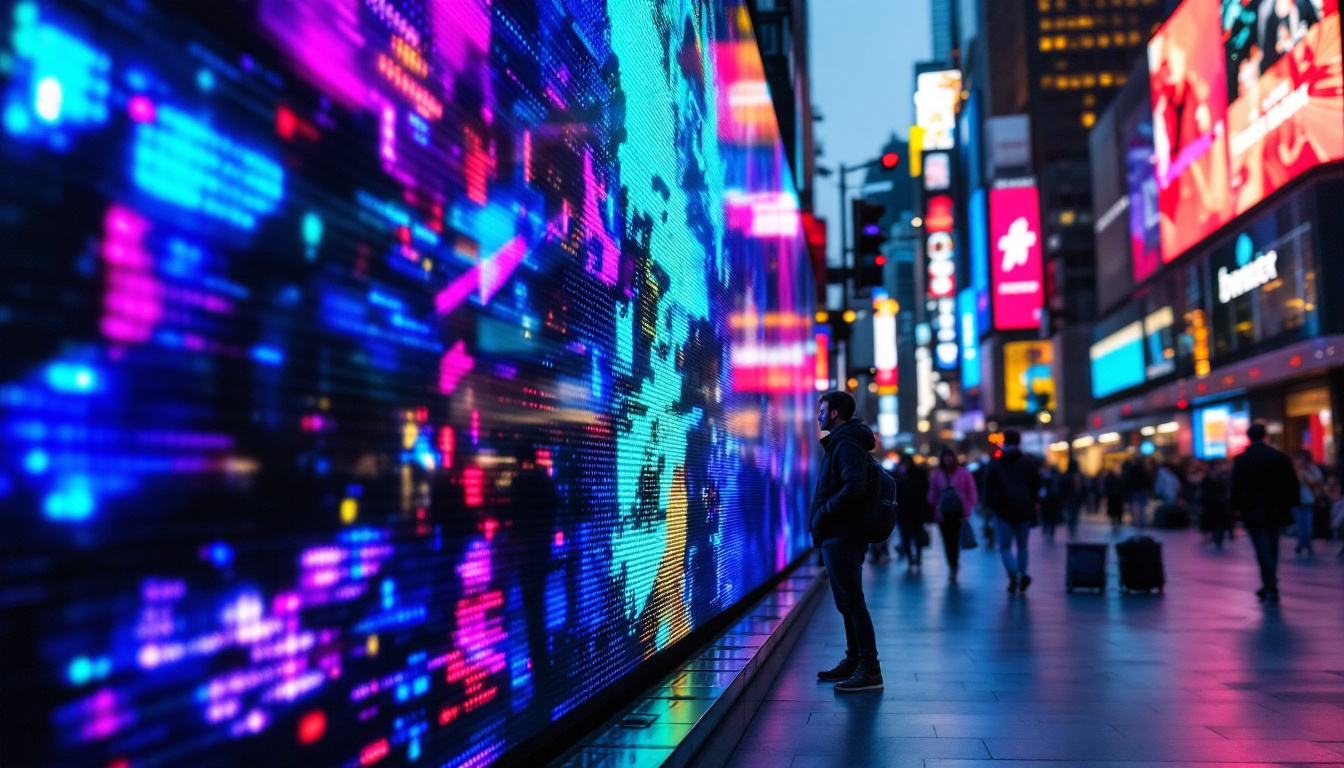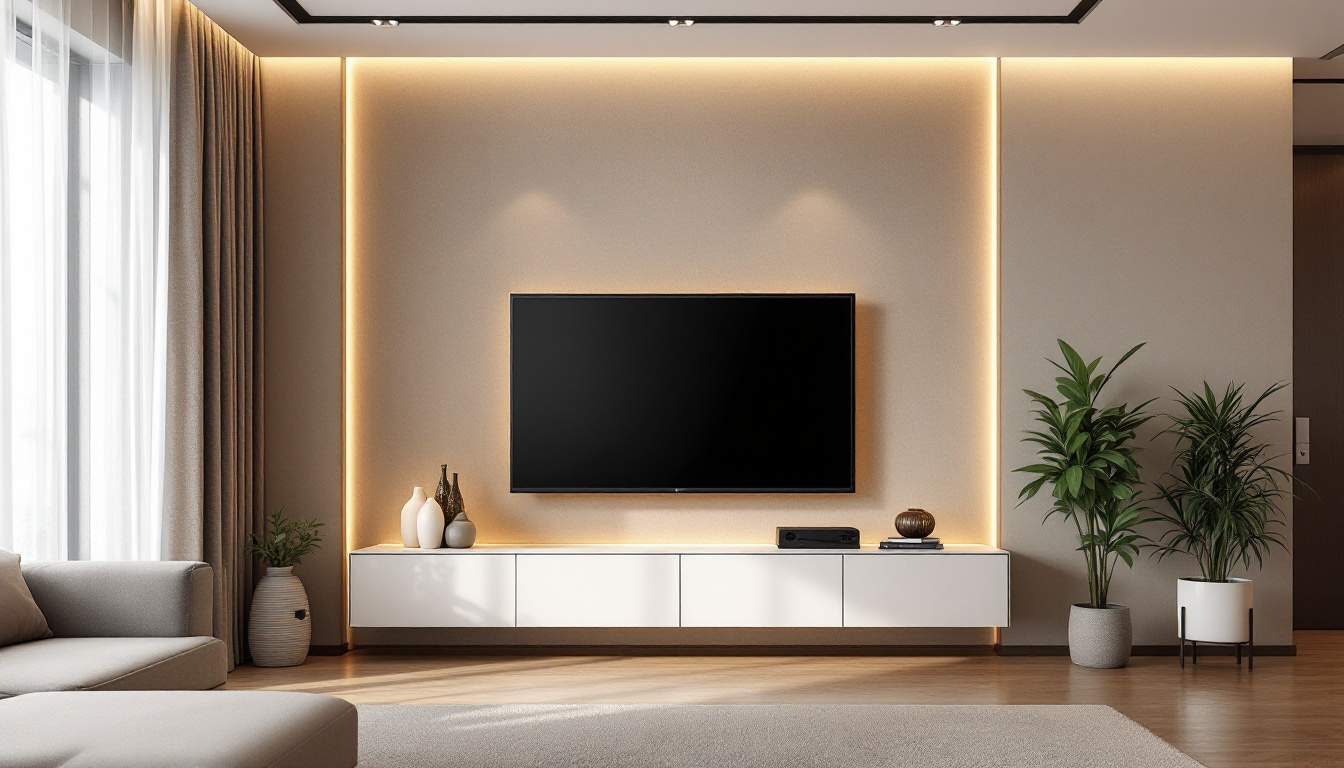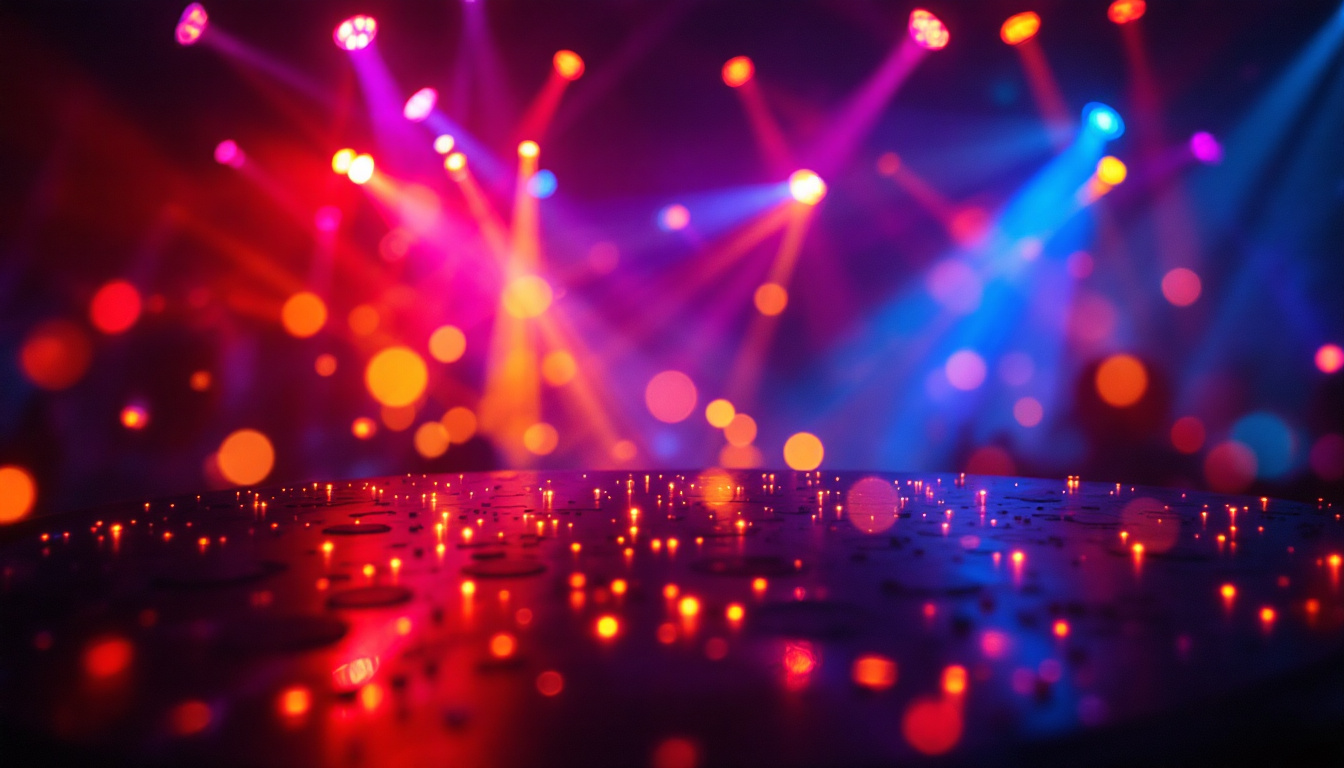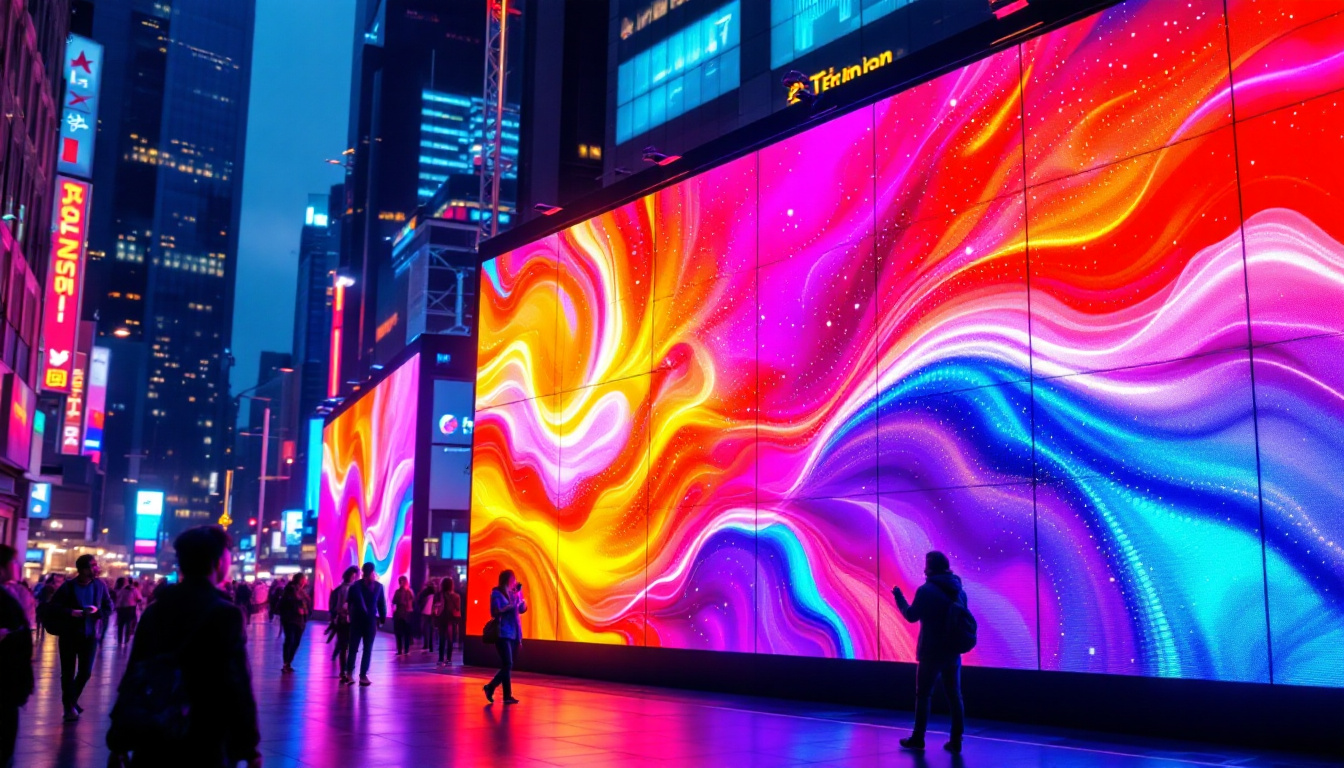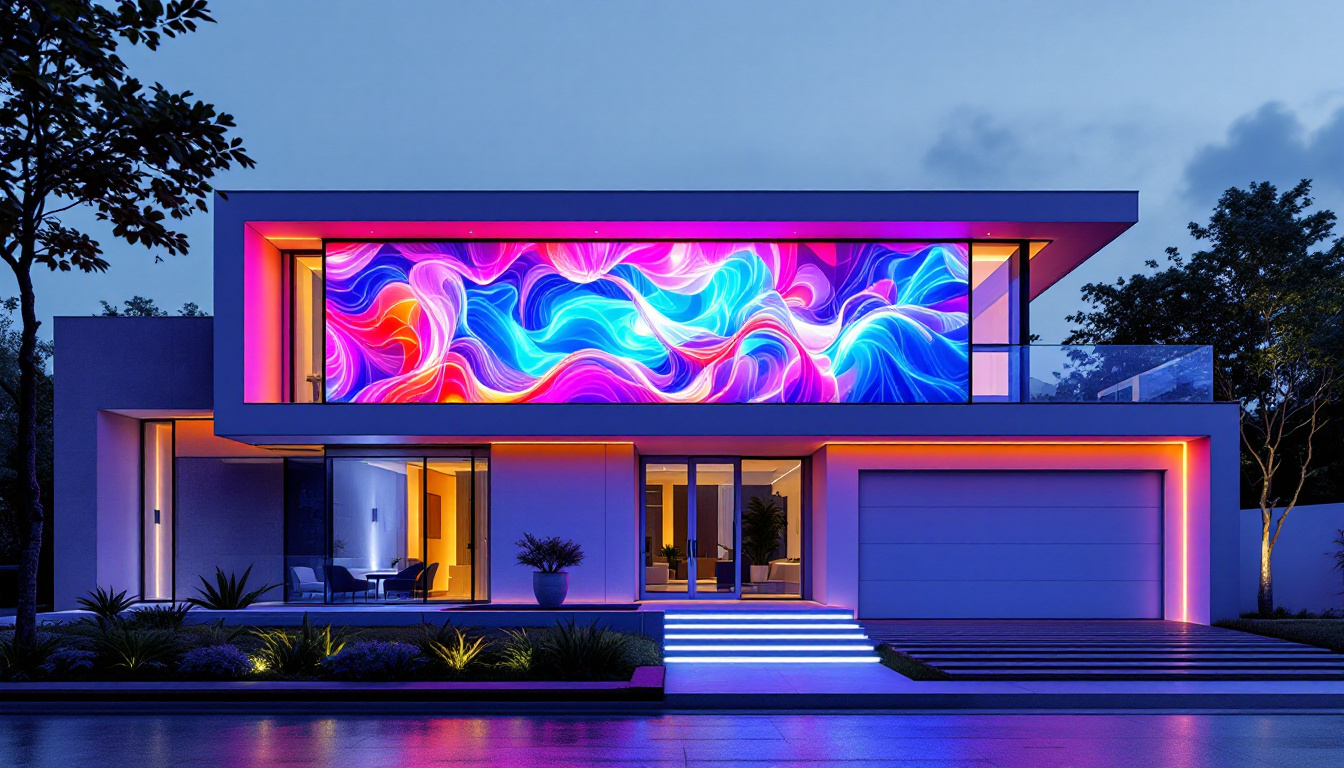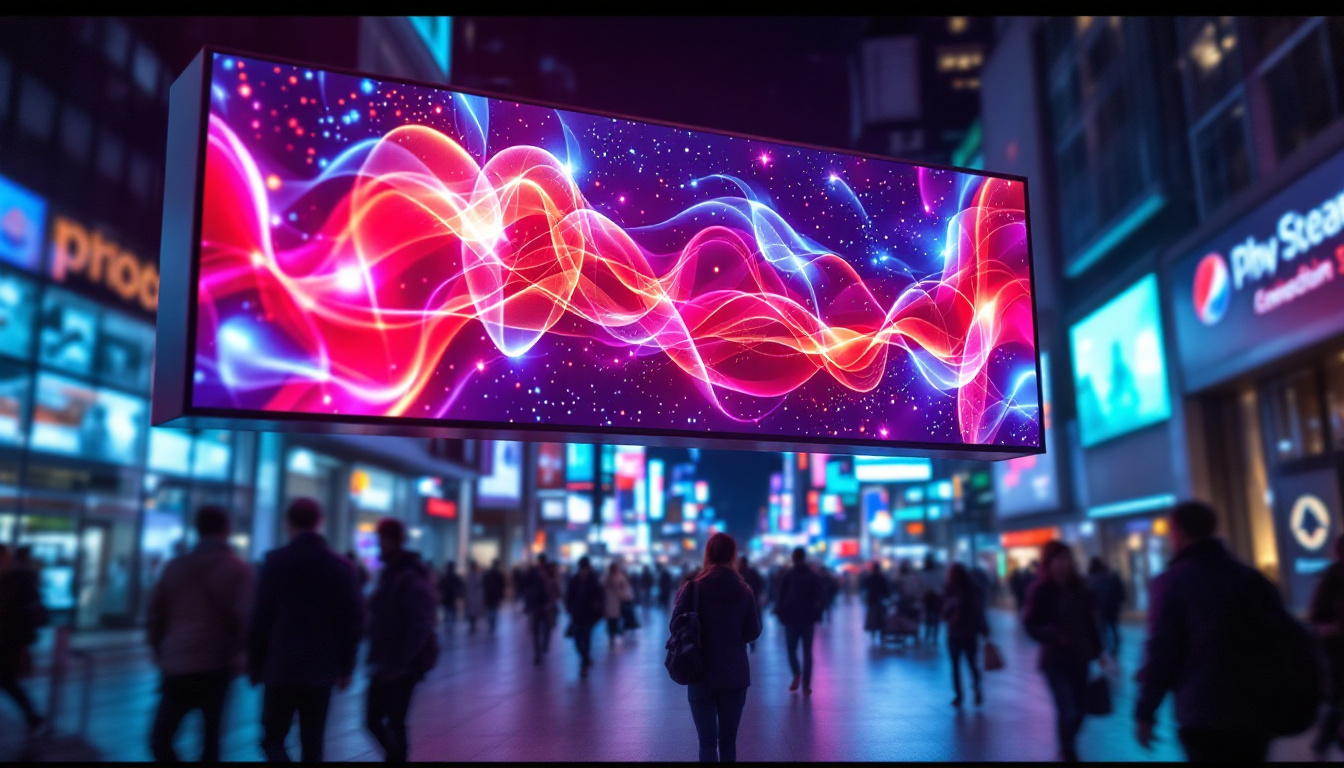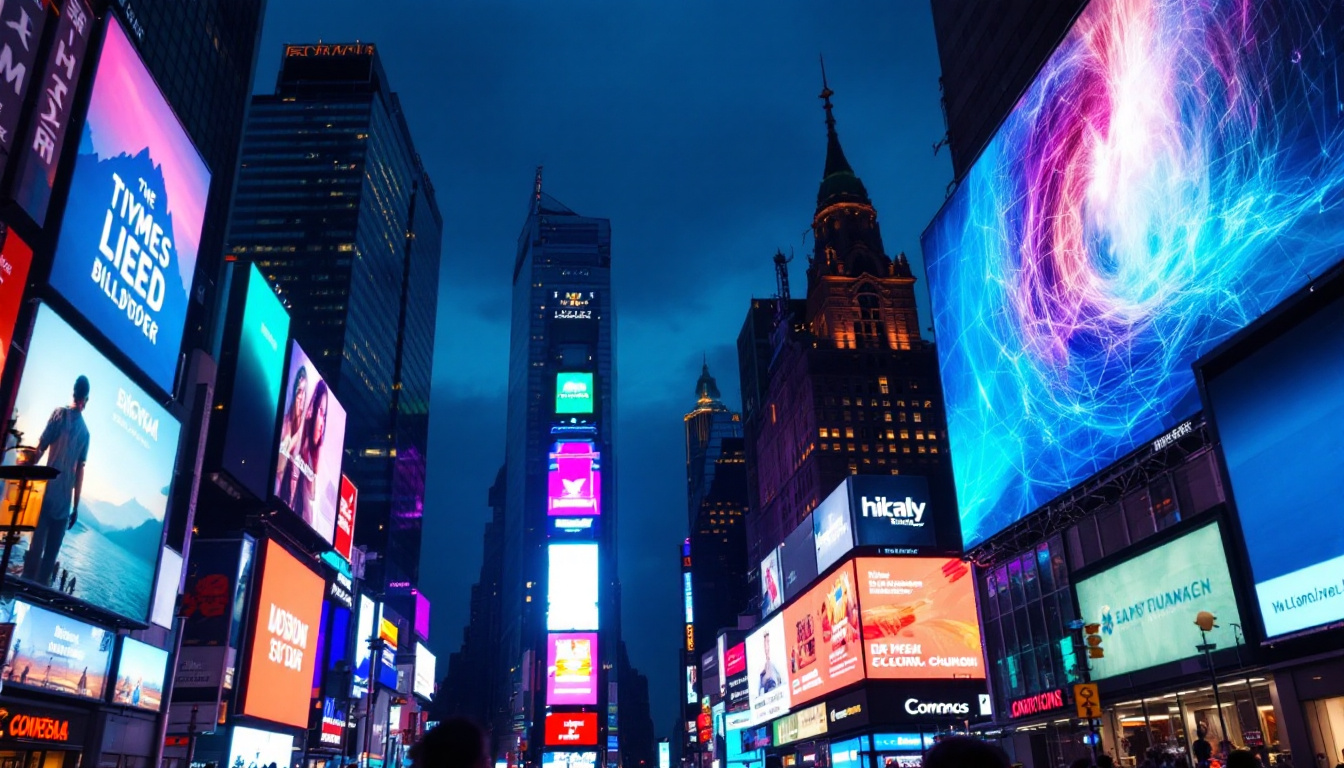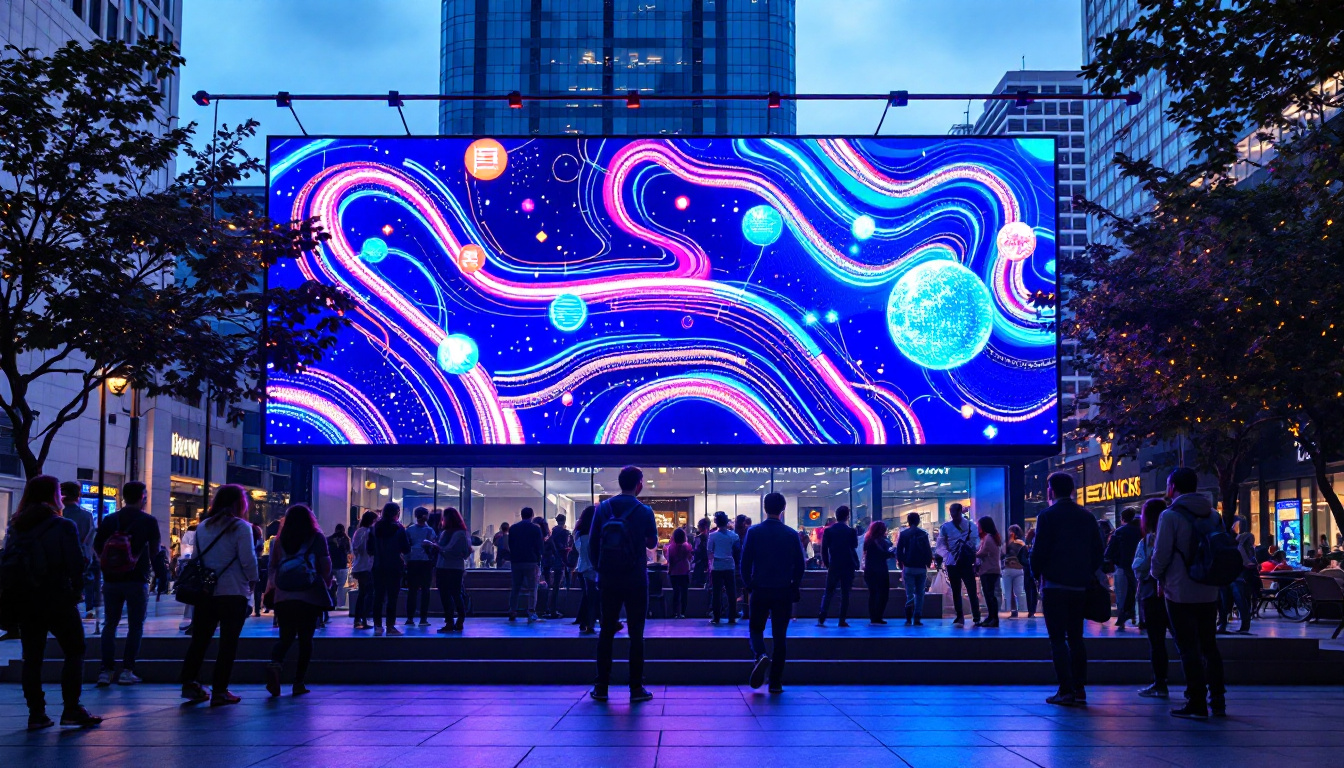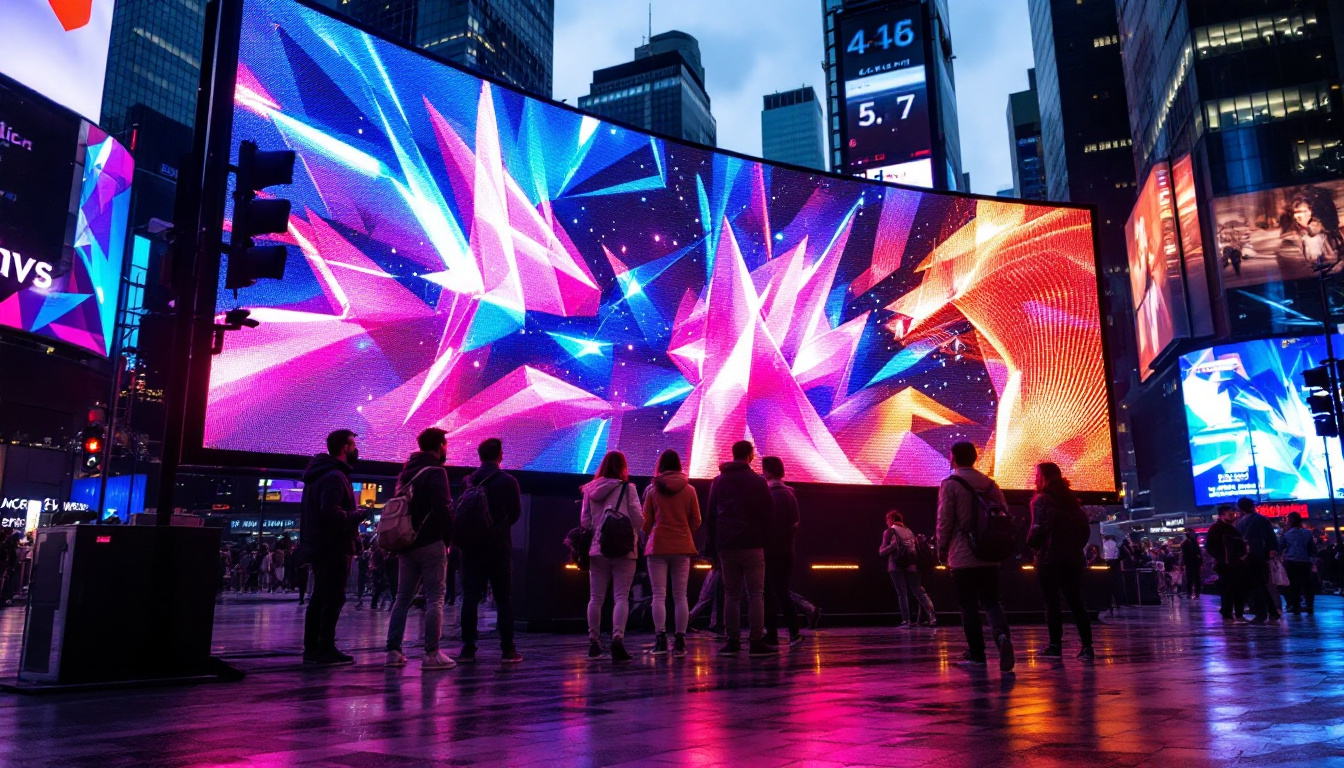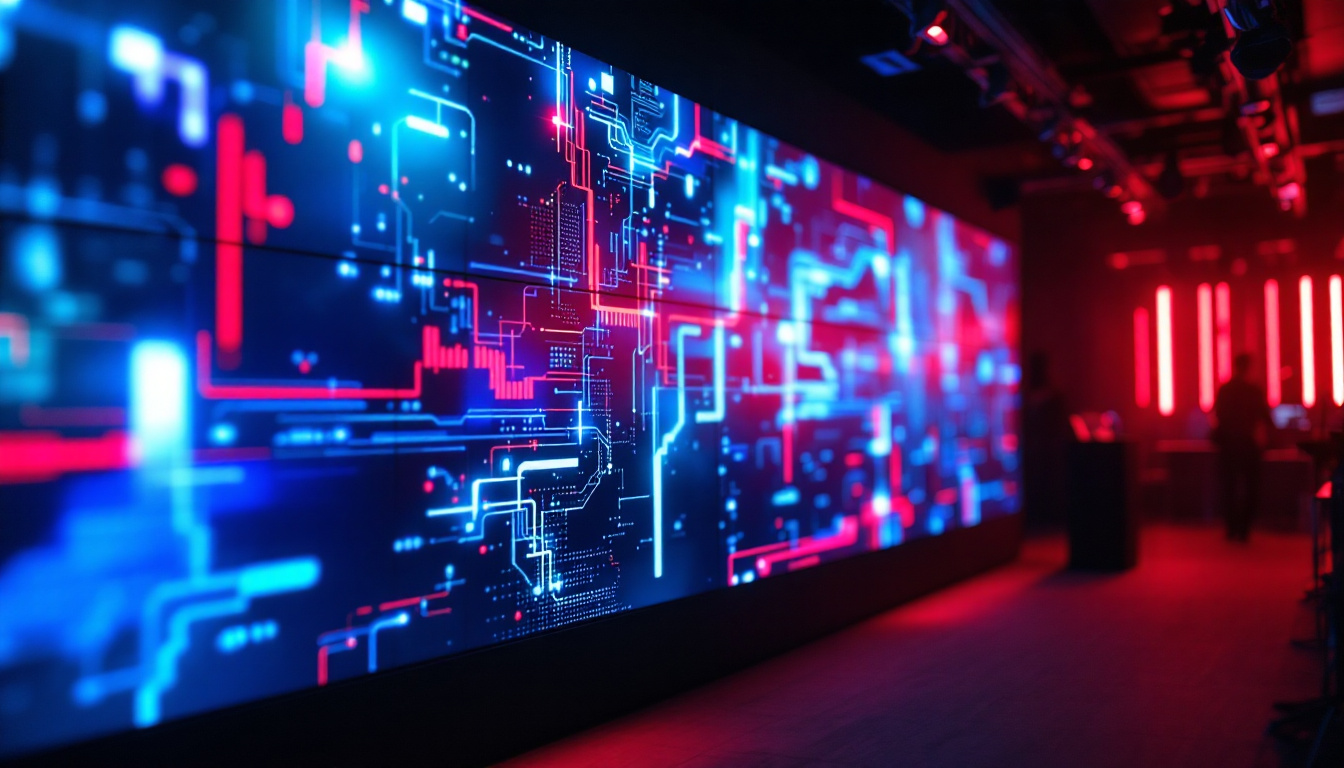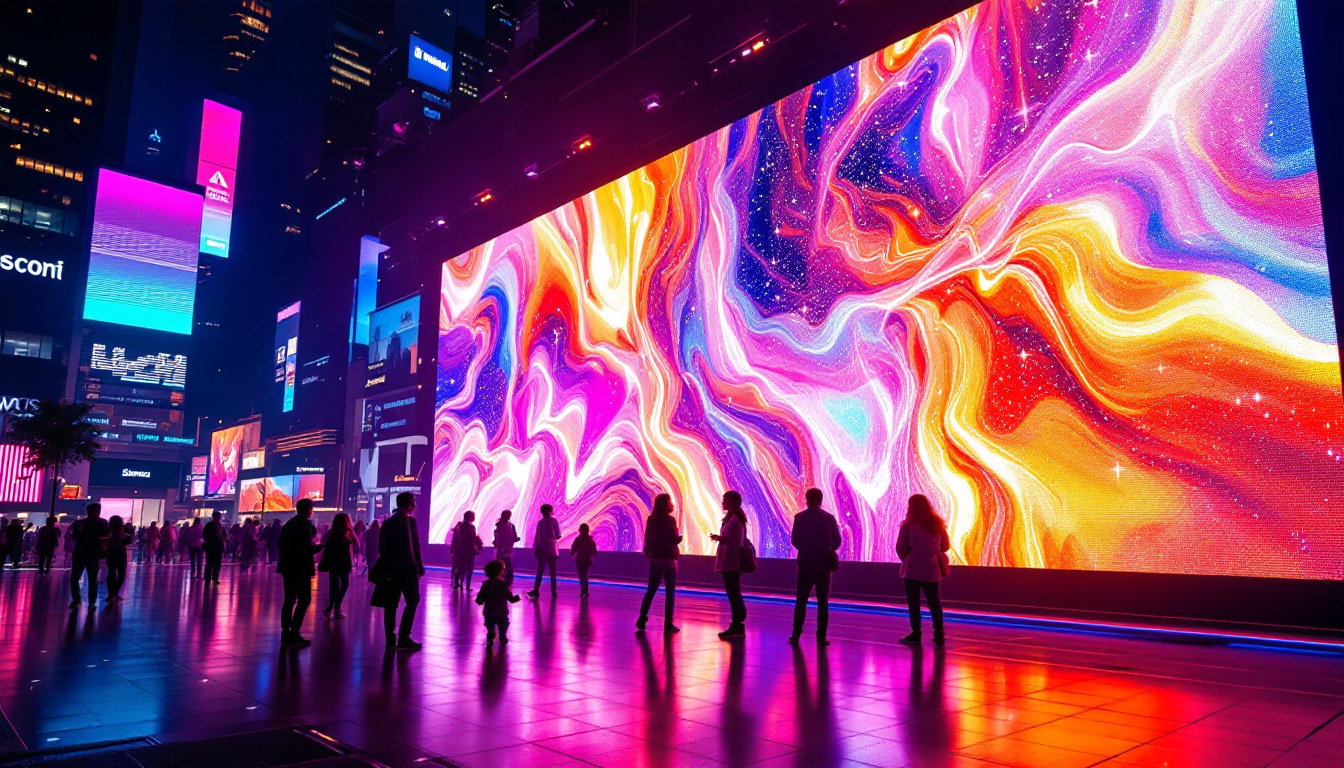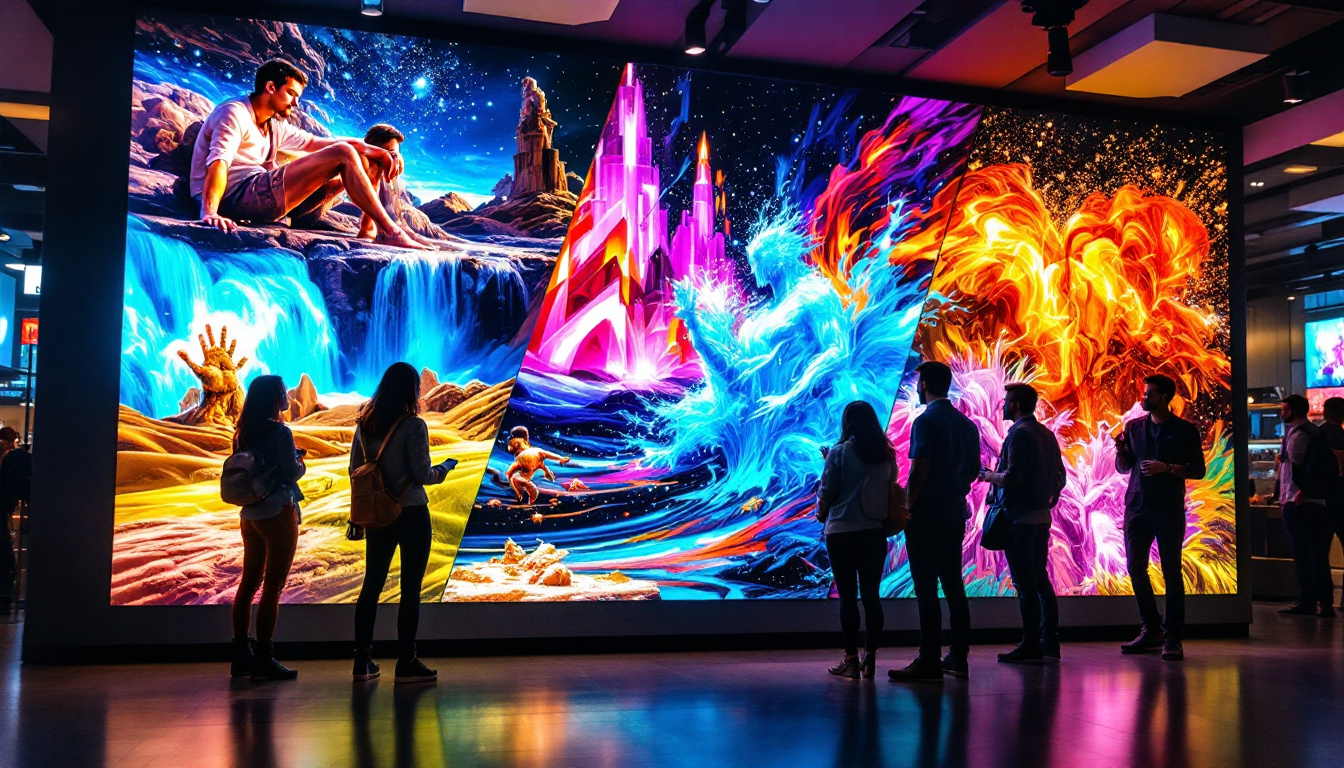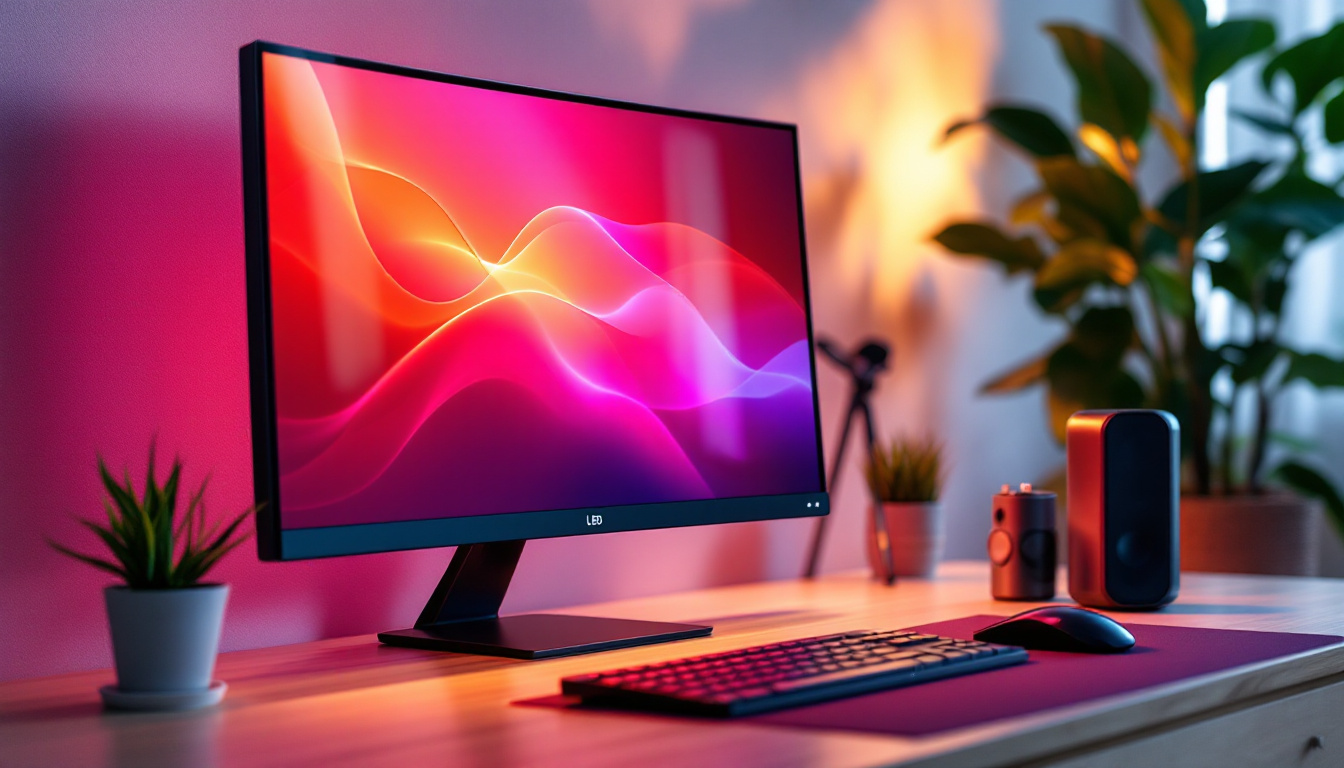In the modern world, LED displays have become ubiquitous, transforming the way information is presented and consumed. From billboards to smartphones, these displays are everywhere, captivating audiences with their vibrant colors and sharp images. This article delves into the intricacies of LED technology, exploring its functionality, applications, and the future it holds.
Understanding LED Technology
Light Emitting Diodes (LEDs) are semiconductor devices that emit light when an electric current passes through them. Unlike traditional incandescent bulbs, which produce light by heating a filament, LEDs generate light through electroluminescence. This fundamental difference not only makes LEDs more energy-efficient but also allows for greater versatility in display applications.
The Basics of LED Functionality
At the core of LED technology is the semiconductor material, typically composed of gallium arsenide or gallium phosphide. When electrons move through this material, they recombine with electron holes, releasing energy in the form of photons—this is the light we see. The color of the emitted light depends on the materials used in the semiconductor and the energy band gap of the material.
LEDs can be categorized into two main types: organic LEDs (OLEDs) and inorganic LEDs. OLEDs are made from organic compounds and are known for their flexibility and superior color reproduction, making them ideal for high-end displays. In contrast, inorganic LEDs are more durable and are commonly used in outdoor applications, such as large-scale advertising displays.
Types of LED Displays
LED displays come in various forms, each suited for specific applications. The most common types include:
- Direct View LED Displays: These displays consist of individual LED modules that create images directly. They are often used in large outdoor screens, such as stadiums and billboards.
- LED Backlit Displays: Found in televisions and computer monitors, these displays use LEDs to illuminate an LCD panel from behind, enhancing brightness and color accuracy.
- MicroLED Displays: A cutting-edge technology that uses microscopic LEDs to create images. MicroLEDs offer superior contrast ratios and energy efficiency, making them a promising alternative to OLEDs.
Applications of LED Displays
The versatility of LED displays has led to their widespread adoption across various industries. Their ability to deliver high-quality visuals in different environments makes them suitable for numerous applications.
Advertising and Marketing
One of the most prominent uses of LED displays is in advertising. Digital billboards and signage have revolutionized marketing strategies, allowing businesses to display dynamic content that can be updated in real-time. This flexibility not only attracts more attention but also enables targeted advertising based on time, location, and audience demographics.
Moreover, LED displays can be found in retail environments, where they enhance the shopping experience by showcasing promotions, product information, and engaging visuals. The bright colors and high contrast of LED screens make them particularly effective at capturing consumer attention.
Entertainment and Events
In the entertainment industry, LED displays have become a staple at concerts, festivals, and sporting events. Large-scale LED screens are used to project live feeds, visuals, and animations, creating an immersive experience for attendees. The ability to display high-resolution images from various angles ensures that everyone in the audience can enjoy the show, regardless of their position.
Furthermore, LED technology is also utilized in stage design, where flexible LED panels can be shaped to fit unique configurations, adding depth and dimension to performances. This adaptability has opened new avenues for creative expression in live events.
Transportation and Public Information
LED displays play a crucial role in transportation systems, providing real-time information to passengers. Train stations, airports, and bus terminals use LED screens to display arrival and departure times, gate information, and other essential updates. The clarity and visibility of LED displays ensure that travelers can easily access the information they need.
Additionally, LED technology is employed in traffic management systems, where dynamic message signs convey important information to drivers, such as road conditions, speed limits, and detours. This application not only enhances safety but also improves traffic flow.
Advantages of LED Displays
The growing popularity of LED displays can be attributed to several key advantages that set them apart from traditional display technologies.
Energy Efficiency
One of the most significant benefits of LED displays is their energy efficiency. LEDs consume significantly less power compared to incandescent bulbs and even traditional LCD displays. This reduced energy consumption not only lowers operational costs but also contributes to environmental sustainability.
Moreover, the longevity of LED technology means that displays can operate for tens of thousands of hours without significant degradation in quality. This durability translates into lower maintenance costs and less frequent replacements, making LEDs a cost-effective solution in the long run.
High Brightness and Contrast
LED displays are known for their exceptional brightness levels, making them suitable for both indoor and outdoor use. This high brightness ensures that content remains visible even in direct sunlight, a crucial factor for outdoor advertising and public information displays.
Additionally, the contrast ratio of LED displays is often superior to that of traditional displays. This means that colors appear more vibrant and details are more pronounced, enhancing the overall viewing experience for audiences.
Flexibility and Scalability
LED technology offers unparalleled flexibility in terms of design and application. Displays can be manufactured in various sizes and shapes, allowing for creative installations that meet specific requirements. This adaptability is particularly valuable in environments where space is limited or where unique display configurations are desired.
Furthermore, LED displays can be easily scaled up or down, making them suitable for a wide range of applications—from small retail displays to massive outdoor billboards. This scalability ensures that businesses can invest in LED technology that aligns with their needs and budget.
Challenges and Considerations
Despite their numerous advantages, LED displays are not without challenges. Understanding these potential drawbacks is essential for making informed decisions about their use.
Initial Costs
The initial investment for LED technology can be higher than that of traditional display options. While the long-term savings on energy and maintenance costs can offset this initial expense, businesses must carefully evaluate their budgets and expected return on investment before making a purchase.
Moreover, the cost of installation and setup can also contribute to the overall expenditure. It is crucial to consider these factors when planning for an LED display project.
Viewing Angles and Distance
Another consideration is the viewing angle and distance. While LED displays offer excellent visibility at close range, the effectiveness can diminish at wider angles. This limitation is particularly relevant for certain applications, such as large outdoor displays, where viewers may be positioned at varying distances.
To address this issue, manufacturers have developed different pixel pitches, which determine the distance between individual LEDs. A smaller pixel pitch allows for closer viewing distances, while a larger pitch is suitable for displays viewed from afar. Understanding the specific requirements of the intended application is essential for selecting the right display.
Environmental Impact
While LED displays are generally more energy-efficient than traditional options, there are still environmental considerations to keep in mind. The production and disposal of LED technology can have ecological implications, particularly concerning the materials used in manufacturing and the potential for electronic waste.
To mitigate these concerns, it is important to choose manufacturers that prioritize sustainable practices and to consider recycling options for outdated displays. By being mindful of the environmental impact, businesses can contribute to a more sustainable future.
The Future of LED Displays
As technology continues to evolve, the future of LED displays looks promising. Innovations in materials, design, and functionality are paving the way for even more advanced display solutions.
Advancements in MicroLED Technology
MicroLED technology is at the forefront of display innovation, promising to deliver even higher resolution and improved energy efficiency. With the potential to create displays that are thinner, lighter, and more flexible than ever before, MicroLEDs are poised to revolutionize the industry.
This technology allows for seamless integration into various applications, from consumer electronics to large-scale installations. As MicroLED technology matures, it is expected to become more accessible and affordable, further driving the adoption of LED displays.
Integration with Smart Technology
The integration of LED displays with smart technology is another exciting development. As the Internet of Things (IoT) continues to expand, LED displays can be connected to various devices and systems, enabling real-time data sharing and interactive experiences.
This connectivity allows for dynamic content that can be customized based on audience engagement, location, and other factors. Businesses can leverage this technology to create more personalized and impactful advertising experiences, enhancing customer engagement and satisfaction.
Sustainability Initiatives
As environmental concerns grow, the industry is increasingly focusing on sustainability initiatives. Manufacturers are exploring eco-friendly materials and production processes, as well as developing recycling programs for outdated displays.
By prioritizing sustainability, the LED display industry can contribute to a greener future while meeting the demands of environmentally-conscious consumers. This shift not only benefits the planet but also enhances brand reputation and customer loyalty.
Conclusion
LED displays have transformed the landscape of visual communication, offering numerous advantages that make them a preferred choice across various industries. From their energy efficiency and vibrant visuals to their adaptability and scalability, LED technology continues to shape the way information is presented and consumed.
As advancements in technology pave the way for new possibilities, the future of LED displays appears bright. With innovations such as MicroLED technology, smart integration, and sustainability initiatives, the potential for growth and development in this field is immense.
Understanding the intricacies of LED displays empowers businesses and consumers alike to make informed decisions, ensuring that they harness the full potential of this dynamic technology. As the world continues to embrace LED displays, the possibilities for creativity and engagement are limitless.
Discover LumenMatrix’s Innovative LED Solutions
Ready to elevate your visual communication with the latest in LED display technology? LumenMatrix is at the forefront of creating immersive and dynamic visual experiences. From Indoor and Outdoor LED Wall Displays to specialized solutions like Vehicle LED Displays, LED Posters, and even Custom LED Displays, we have the cutting-edge technology to bring your brand to life. Embrace the future with our All-in-One LED Displays, LED Transparent Displays, and more. Check out LumenMatrix LED Display Solutions today and see how we can transform your space with unparalleled clarity and impact.

